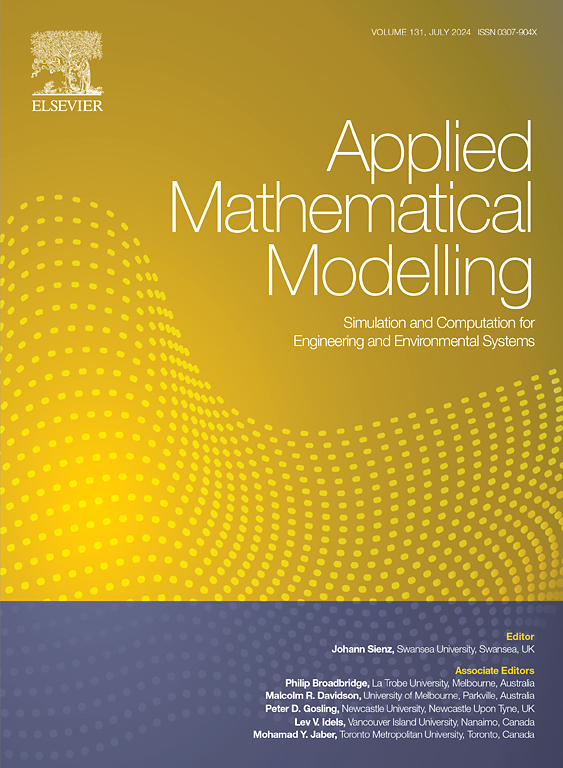Motion controller for multi-joint robotic arm with deep cascade gated Bayesian broad learning system
IF 4.4
2区 工程技术
Q1 ENGINEERING, MULTIDISCIPLINARY
引用次数: 0
Abstract
Intelligent controllers based on the broad learning system can simplify the process of model parameter adjustment, finding wide applications in the motion control of multi-joint robotic arms. However, motion controllers for multi-joint robotic arms based on broad learning system exhibit insufficient precision and overlook the impact of joint motion commonalities on controller design. Therefore, this paper proposes a novel motion control strategy for a multi-joint robotic arm based on a deep cascade feature-enhancement gated Bayesian broad learning system. Firstly, the motion controller of the deep cascade feature-enhancement Bayesian broad learning system is constructed to enhance the robotic arm motion control precision. Secondly, an incremental node generation module with an attention-gated mechanism is constructed to capture the unique motion characteristics of the target joints, which is further combined with model generalization to simplify the motion control process of the multi-joint robotic arm. Finally, controller convergence is enhanced by combining it with the Lyapunov theory to constrain the learning parameters. Simulations and physical experiments are designed to verify the feasibility and superiority of the proposed motion control strategy. The results demonstrated that the strategy improved the accuracy of robotic arm motion control, with the root mean square error in position tracking reduced to 0.0019 rad. This represents a 93.39% reduction in error compared to existing techniques.
采用深度级联门控贝叶斯广义学习系统的多关节机械臂运动控制器
基于广义学习系统的智能控制器可以简化模型参数调整过程,在多关节机械臂的运动控制中得到广泛应用。然而,基于广义学习系统的多关节机械臂运动控制器精度不足,且忽略了关节运动共性对控制器设计的影响。因此,本文提出了一种基于深度级联特征增强门控贝叶斯广义学习系统的新型多关节机械臂运动控制策略。首先,构建了深度级联特征增强贝叶斯广义学习系统的运动控制器,以提高机械臂的运动控制精度。其次,构建了具有注意力门控机制的增量节点生成模块,以捕捉目标关节的独特运动特征,并进一步结合模型泛化来简化多关节机械臂的运动控制过程。最后,通过与限制学习参数的 Lyapunov 理论相结合,增强了控制器的收敛性。仿真和物理实验验证了所提出的运动控制策略的可行性和优越性。结果表明,该策略提高了机械臂运动控制的精度,位置跟踪的均方根误差降低到了 0.0019 rad。与现有技术相比,误差减少了 93.39%。
本文章由计算机程序翻译,如有差异,请以英文原文为准。
求助全文
约1分钟内获得全文
求助全文
来源期刊

Applied Mathematical Modelling
数学-工程:综合
CiteScore
9.80
自引率
8.00%
发文量
508
审稿时长
43 days
期刊介绍:
Applied Mathematical Modelling focuses on research related to the mathematical modelling of engineering and environmental processes, manufacturing, and industrial systems. A significant emerging area of research activity involves multiphysics processes, and contributions in this area are particularly encouraged.
This influential publication covers a wide spectrum of subjects including heat transfer, fluid mechanics, CFD, and transport phenomena; solid mechanics and mechanics of metals; electromagnets and MHD; reliability modelling and system optimization; finite volume, finite element, and boundary element procedures; modelling of inventory, industrial, manufacturing and logistics systems for viable decision making; civil engineering systems and structures; mineral and energy resources; relevant software engineering issues associated with CAD and CAE; and materials and metallurgical engineering.
Applied Mathematical Modelling is primarily interested in papers developing increased insights into real-world problems through novel mathematical modelling, novel applications or a combination of these. Papers employing existing numerical techniques must demonstrate sufficient novelty in the solution of practical problems. Papers on fuzzy logic in decision-making or purely financial mathematics are normally not considered. Research on fractional differential equations, bifurcation, and numerical methods needs to include practical examples. Population dynamics must solve realistic scenarios. Papers in the area of logistics and business modelling should demonstrate meaningful managerial insight. Submissions with no real-world application will not be considered.
 求助内容:
求助内容: 应助结果提醒方式:
应助结果提醒方式:


